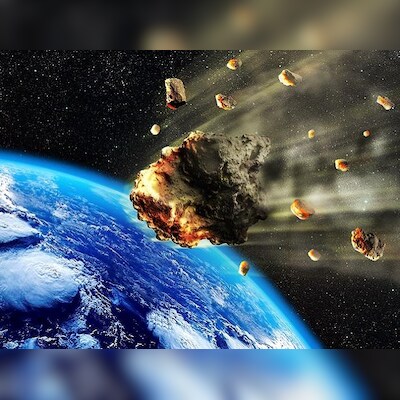Asteroid 2024 ON not hitting earth but its speed concerning, says Nasa | World News

A giant 720-foot asteroid named 2024 ON is expected to make its closest approach to earth today. The asteroid will safely pass earth at a distance of 997,793 kilometres, which is 2.5 times the distance between the earth and the moon – considered safe for earthlings, but a negligible distance by cosmic standards.
According to the National Aeronautics and Space Administration (Nasa), the speed of the asteroid is around 40,233 km/h, which is a bit concerning. The asteroid will reach the closest to earth on September 17.
The ATLAS Sky Survey discovered the 2024 ON asteroid on July 27. The live streaming of the event was televised on virtualtelescope.eu/webtv on September 15 starting at 19:30 UTC (1:00 AM September 16).
Nasa is keeping a close eye on the event with its Jet Propulsion Laboratory (JPL) located in Pasadena, California. It uses optical telescopes to understand and study the composition, shape, and size of the asteroid.
If asteroid 2024 ON had hit Earth, the damage would have been immense. Its impact could have triggered an explosion in the atmosphere, creating a massive shockwave. However, the asteroid safely passed by, leaving Earth unscathed.
Nasa says its Planetary Defense Coordination Office (PDCO) will track and deflect the space rock if needed. The JPL Center for Near-Earth Object Studies (CNEOS) reports that similar close encounters will take place every 10 years.
It is very common for asteroids to pass the earth. In fact, several asteroids like 2024 RQ5 (the bus-size asteroid), 2024 RM10 (the plane-size asteroid), and a few more asteroids passed the earth today without causing any issues.
Asteroid Collisions with Earth
Many asteroid collisions are occurring more than many realise. According to Nasa, every day around 48.5 tonnes of meteoric material enter Earth’s atmosphere typically burning up as shooting stars.
However, larger objects are much rarer. The collisions of asteroids are quite tough, but they are not impossible. To reduce the risks, Nasa and the European Space Agency (ESA) operate programmes to detect, classify and monitor Near Earth Objects (NEOs). The efforts aim to ensure preparedness for potential asteroid impacts.
First Published: Sep 16 2024 | 2:18 PM IST




